A LINN SONDEK LP-12 MOD
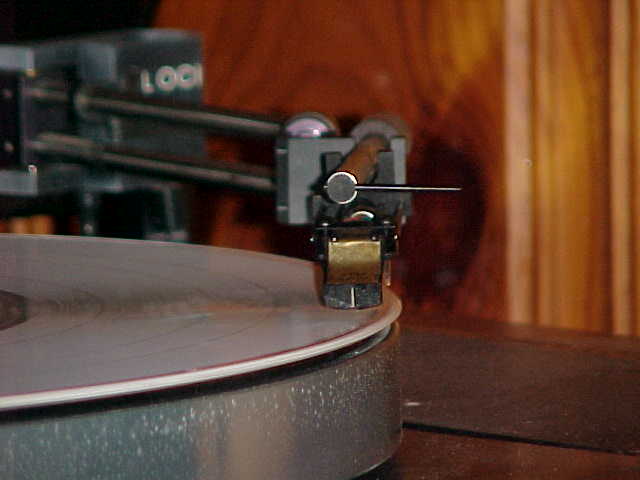 I bought my Linn Sondek
LP12
turntable in 1979
from Mel Schilling's store in Los Angeles,
MUSIC AND SOUND OF CALIFORNIA,
for the princely sum of $795.
The product was surrounded with some egregious hype,
but it really does sound ``simply better.''
I used it as the showcase for my own invention,
the LOCI tonearm,
and I have enjoyed listening to my Linn for twenty-three years
[written in 2002 February].
I upgraded it
with the Nirvana kit, new springs I think,
and the Valhalla kit, a new and smoother power supply.
(One of my LOCI tonearms in the
Brooks Berdan Audio Museum
in Monrovia, California.)
I bought my Linn Sondek
LP12
turntable in 1979
from Mel Schilling's store in Los Angeles,
MUSIC AND SOUND OF CALIFORNIA,
for the princely sum of $795.
The product was surrounded with some egregious hype,
but it really does sound ``simply better.''
I used it as the showcase for my own invention,
the LOCI tonearm,
and I have enjoyed listening to my Linn for twenty-three years
[written in 2002 February].
I upgraded it
with the Nirvana kit, new springs I think,
and the Valhalla kit, a new and smoother power supply.
(One of my LOCI tonearms in the
Brooks Berdan Audio Museum
in Monrovia, California.)
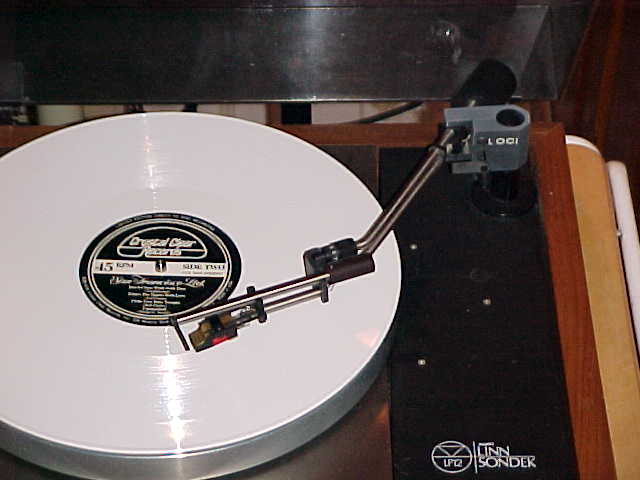 Russ Sherwood of
Eagle
fame had mentioned the Linn motor
as a source of vibration and sonic coloration.
He provided a demonstration
using alternative methods of turntable propulsion.
Russ was too intoxicated to provide perfect speed control
with his finger on the record label
and I was too intoxicated to mind,
so the demonstration was a complete success.
He claims he has a better demonstration,
one more conducive to sober listening,
where one takes two Linn LP12 turntables,
runs a long rubber band around both of them,
takes the belt off of one of them,
and uses the other one as the source of motive power.
I'm sure it is an impressive demonstration
until the rubber band slips off,
gets sucked under the platters,
and finds itself snarled around the motor and drive belt.
Russ Sherwood of
Eagle
fame had mentioned the Linn motor
as a source of vibration and sonic coloration.
He provided a demonstration
using alternative methods of turntable propulsion.
Russ was too intoxicated to provide perfect speed control
with his finger on the record label
and I was too intoxicated to mind,
so the demonstration was a complete success.
He claims he has a better demonstration,
one more conducive to sober listening,
where one takes two Linn LP12 turntables,
runs a long rubber band around both of them,
takes the belt off of one of them,
and uses the other one as the source of motive power.
I'm sure it is an impressive demonstration
until the rubber band slips off,
gets sucked under the platters,
and finds itself snarled around the motor and drive belt.
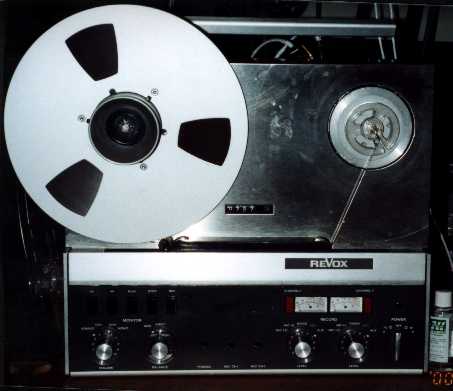 Well, my friend
Jeff
suggested the same thing about the Linn motor.
Now Jeff is an
audio weenie
just like
me.
I believe his wife uses the technical term
``nut cases''
to describe us and our audio hobby.
But Jeff is also a
real engineer
and knows how to make electronic things work.
Well, my friend
Jeff
suggested the same thing about the Linn motor.
Now Jeff is an
audio weenie
just like
me.
I believe his wife uses the technical term
``nut cases''
to describe us and our audio hobby.
But Jeff is also a
real engineer
and knows how to make electronic things work.
Linn came out with an outboard power supply called
LINGO that costs thousands of dollars
and Naim makes the ARMAGEDDON,
also an outboard power supply for the LP12.
Not only are these gadgets expensive,
the pundits point out that they send a lot of
``hash'' back into the A/C mains.
(On 2008 September 10 I'm told
that the Naim ARMAGEDDON does not send nasty hash
back into the A/C mains.)
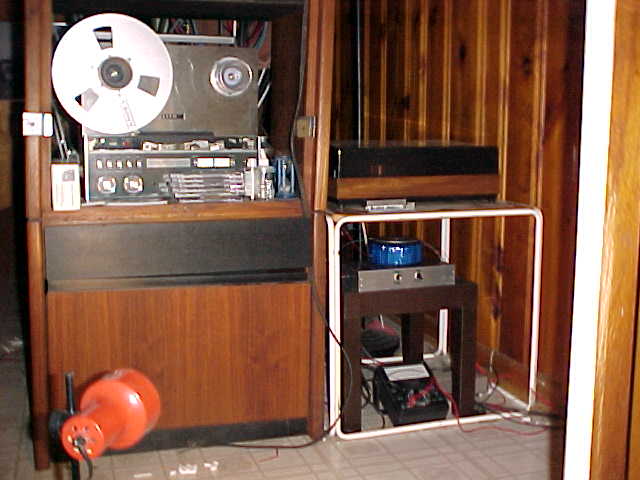 Jeff came up with a simple
circuit
than even I could build.
He got me a monster transformer
(and I don't know where he got it)
and was nice enough to provide a few resistors
and the necessary capacitor value.
I pulled out my handy-dandy soldering gun
and put the circuit together.
Jeff came up with a simple
circuit
than even I could build.
He got me a monster transformer
(and I don't know where he got it)
and was nice enough to provide a few resistors
and the necessary capacitor value.
I pulled out my handy-dandy soldering gun
and put the circuit together.
There was the usual excitement putting a circuit together
as it is not something I do very often.
I have wired a crossver here and there,
but I seldom put together a circuit
that is going to plug into the wall.
So there was some excitement and concern.
But the moment had come,
the circuit was complete, and
this
is what happened when I turned it on the first time.
Just kidding, actually it worked fine.
But I am NOT kidding that
you should only mess around with this sort of thing
if you know what you're doing.
The voltage and current that come out of the wall
are LETHAL enough to give you a shocking experience.
I am taking no responsibility for anybody,
as a consequence of reading this or anything else I write,
hurting himself or damaging some prized piece of audio gear.
This is the realm of audio tweaking,
the nether-world of the unknown,
and lots of good things and bad things can happen
to you and your beloved hifi gear.
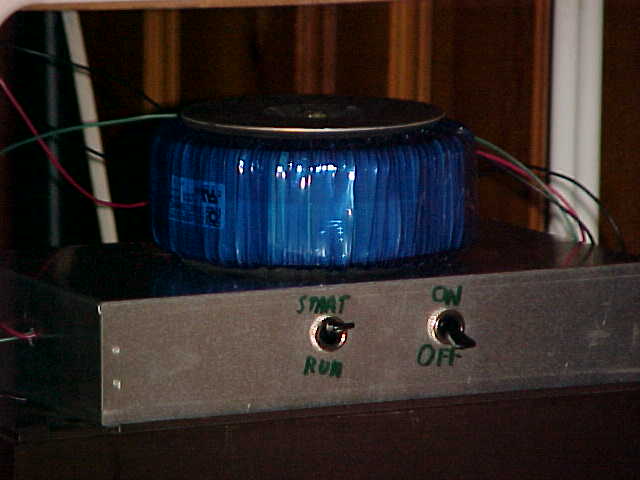 ``Well,''
I hear you pant with breathless anticipation,
``how does it sound?''
The answer is that it sounds wonderful.
I immediately noticed more spatial resolution,
a more fully developed sense of the three-dimensional
space around the musicians.
Even on ordinary ``multi-miked''
mixed-down recordings,
the individual musicians now have their own space.
Also, the texture, the detail, the musical nuances
are clearer, more real, and in proper perspective.
The music is just more engaging.
``Well,''
I hear you pant with breathless anticipation,
``how does it sound?''
The answer is that it sounds wonderful.
I immediately noticed more spatial resolution,
a more fully developed sense of the three-dimensional
space around the musicians.
Even on ordinary ``multi-miked''
mixed-down recordings,
the individual musicians now have their own space.
Also, the texture, the detail, the musical nuances
are clearer, more real, and in proper perspective.
The music is just more engaging.
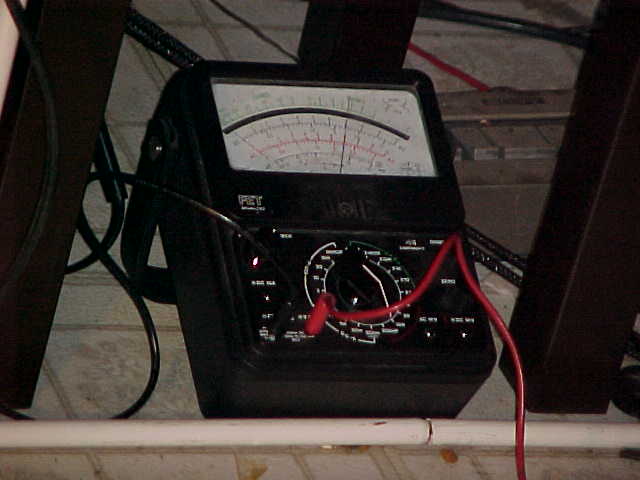 I tried a series of resistor values and found that
3000 ohms sounded better than 2000 or 4000 ohms.
Measuring the motor with a voltmeter,
that meant that 62 volts sounded a little better than 70
and a lot better than 56 volts.
Since the turntable won't start at 62 volts,
I installed the START/RUN switch that
lets me start it at 88 volts
long enough for motor to start running
and the platter to start turning
and then to play records at 62 volts.
I tried a series of resistor values and found that
3000 ohms sounded better than 2000 or 4000 ohms.
Measuring the motor with a voltmeter,
that meant that 62 volts sounded a little better than 70
and a lot better than 56 volts.
Since the turntable won't start at 62 volts,
I installed the START/RUN switch that
lets me start it at 88 volts
long enough for motor to start running
and the platter to start turning
and then to play records at 62 volts.
It would be an exaggeration to say I have
rediscovered my
entire record collection,
as the Linn Sondek LP12 is already a fine turntable.
But there is something new and wonderful
each time I play a record.
Old friends have new voices.
This suggests that other turntables may have similar opportunities.
The transformer does three things:
it lowers the voltage,
it filters common-mode interference on the mains,
and it removes most of the differential interferences as well.
Providing a clean power signal at a lower voltage
may make a similar sonic improvement on other
record playing systems.
This kind of thing
tells us that the high point that audio reached
about twenty years ago was not a summit.
Every once in a while in the world of audio
I hear something new,
something wonderful,
something
glorious that did not exist in 1983.
It tells us that we audio weenies,
as a group,
turned away from the path to audio fulfillment
before our time.
It tells us that those of us
who really enjoy listening to music
and who really enjoy the audio hobby
can still have some fun with it.
THE ADAM HOME PAGE
adam@the-adam.com
 I bought my Linn Sondek
LP12
turntable in 1979
from Mel Schilling's store in Los Angeles,
MUSIC AND SOUND OF CALIFORNIA,
for the princely sum of $795.
The product was surrounded with some egregious hype,
but it really does sound ``simply better.''
I used it as the showcase for my own invention,
the LOCI tonearm,
and I have enjoyed listening to my Linn for twenty-three years
[written in 2002 February].
I upgraded it
with the Nirvana kit, new springs I think,
and the Valhalla kit, a new and smoother power supply.
(One of my LOCI tonearms in the
Brooks Berdan Audio Museum
in Monrovia, California.)
I bought my Linn Sondek
LP12
turntable in 1979
from Mel Schilling's store in Los Angeles,
MUSIC AND SOUND OF CALIFORNIA,
for the princely sum of $795.
The product was surrounded with some egregious hype,
but it really does sound ``simply better.''
I used it as the showcase for my own invention,
the LOCI tonearm,
and I have enjoyed listening to my Linn for twenty-three years
[written in 2002 February].
I upgraded it
with the Nirvana kit, new springs I think,
and the Valhalla kit, a new and smoother power supply.
(One of my LOCI tonearms in the
Brooks Berdan Audio Museum
in Monrovia, California.)




